Reinform is a theme that will reinform your website with its contemporary aesthetic that’s subdued, clean, and swift. Reinform is suitable for a vastly eclectic array of content – whatever you throw at it; it’ll look insanely good.
Learn how you can get the most out of the theme with the Reinform WordPress theme documentation.
Reinform WordPress theme documentation, step 1: Theme specifications
- Recommended logo size 220x50px.
- The featured image width should be 1200px.
- Single post and page content width should be 760px.
Reinform WordPress theme documentation, step 2: Theme installation
The theme can be installed through the WordPress Admin panel.
- Log in to the WordPress Admin panel.
- Go to Appearance -> Themes.
- Click on the Add New button, at the top of the screen.
- In Add Themes screen, click on Upload Theme.
- Click on Choose theme, and then browse for theme file on your computer.
- Click on Install Now to start the install process.
- After the installation is done, click on Activate theme.
A detailed video for theme installation is available here: https://help.themeskingdom.com/how-to-install-and-setup-the-theme.
After activating the theme, you will be prompted to install the required plugins. Required plugins in the Reinform WordPress theme documentation are:
Reinform WordPress theme documentation, step 3: Theme demo
To set the theme as presented in our demo, you can import the demo file.
Reinform WordPress theme documentation, step 4: Theme setup
Reinform theme is set to display the latest posts on the homepage. To set your theme the same way we did in our demo, you’ll need to:
- First, you will need to create several post categories. Categories will be used to group posts, and in the theme, we will use them in the navigation and set Featured Category Slider.
- When you are done with creating the categories, create several posts and associate them with different categories. Make sure to set the featured image for each post. Tag desired posts with the same tag (e.g., “Featured”). We will use this tag to display those posts in the featured content slider which is displayed on the top of the homepage.
- Create several portfolio items, as well. Be sure to set the featured images for each portfolio item.
- Now, you’ll need to create pages where your content will be displayed – create pages About, Contact, and Moodboard. About and Contact pages are using the Default page template, while Moodboard is using the Portfolio page template. Insert a contact form into the Contact page.
- Reinform theme is using Your latest post-reading settings, so you don’t need to change it.
- Go to Appearance -> Menus and create a new menu. Add Home as Custom Link to your homepage, all pages, and add categories as subitems for the Categories item. Mark this menu as Primary.
- Create another menu – Social menu. Add links to your social profiles using Custom Link. When you are done, mark this menu as Social.
- Finally, you’ll need to tweak a few things in the Customizer. Go to Appearance -> Customize:
- Site Identity: Set a logo and favicon for your site.
- Content Options: Turn all options on.
- Featured content: Enter the tag that you have used for your posts (“Featured”). Please note that posts that you wish to display in the slider must have featured images.
- Theme Options -> Featured Category Slider: Enable the Featured Category Slider and select the post category that you wish to display in the category slider. Enter a title for the slider and number of posts that you wish to display.
- Theme Options -> Layout Settings: Enable Display the featured image in full-width in single posts, and set Blog layout to Magazine style, with three columns.
Reinform WordPress theme documentation, step 5: The Customizer
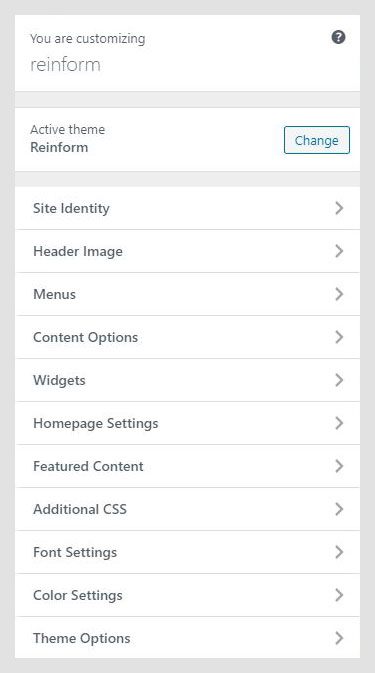
The Customizer in the Reinform WordPress theme documentation is a great WordPress feature that allows you to customize the theme and set theme options. Theme specific settings:
- Site Identity
- Header Image
- Menus
- Content Options
- Widgets
- Static Front Page
- Featured Content
- Additional CSS
- Related Posts
- Font Settings
- Color Settings
- Theme Options
Site Identity
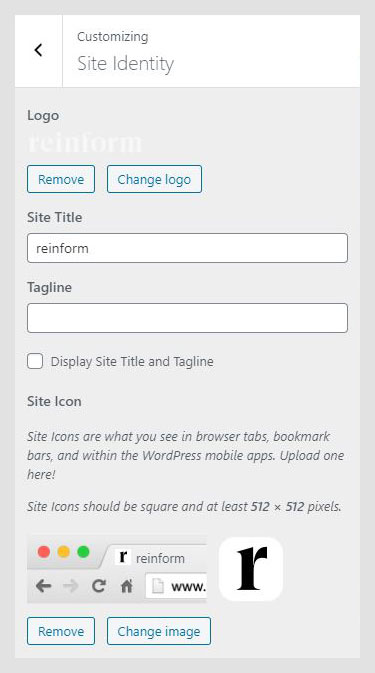
Site Identity allows you to set your site title, tagline, and icon. The Site Title is the name of your site and it’s displayed in the header, where the logo is displayed. The Tagline is a short description or your motto, and it’s displayed just under the title. This setting is the same as in Settings -> General in the WordPress admin panel.
- Logo: Upload logo for your site. The logo should be in a PNG or JPEG/JPG format.
- Site title: Name of your site.
- Tagline: Site punchline.
- Display Site Title and Tagline: If enabled, both Site Title and Tagline will be displayed. The Tagline will be displayed under the title.
- Site Icon: The Site Icon is used as a browser and app icon for your site. Icons must be square, and at least 512px wide and tall.
Header Image

The Header Image in the Reinform WordPress theme documentation is used as a background image for the header section when the logo is set to display in the center. The Centered logo can be set in Header Settings.
Menus
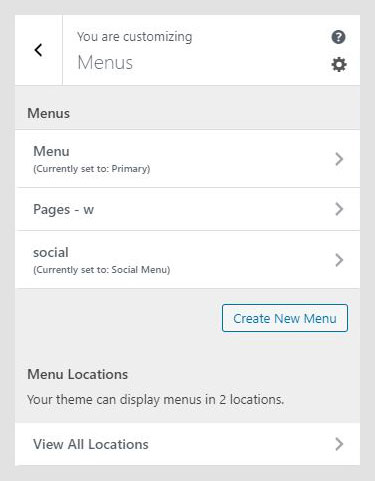
This option allows you to manage created menus quickly. You can select which created menu will be displayed as a Primary Menu or Footer Menu. If you need to manage actual menu items, you can do that in Appearance -> Menu.
Content Options
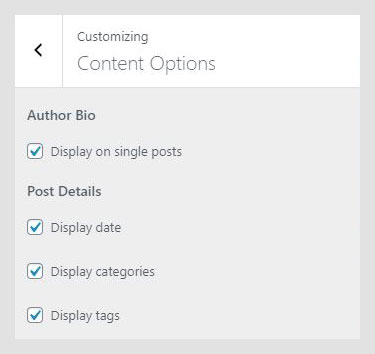
The Content Options panel contains settings for metadata for single posts – both regular and portfolio.
- Author Bio: If enabled, the author bio box will be displayed on the single post page.
- Display date: If enabled, the publishing date will be displayed on a single and posts page.
- Display categories: If enabled, post categories will be displayed on a single and posts page.
- Display tags: If enabled, post tags will be displayed on a single and posts page.
Widgets

The Widgets section in the Reinform WordPress theme documentation allows you to manage widgets in widget areas quickly. This option allows you the same possibility as the Widgets option in the WordPress admin panel.
Static Front Page
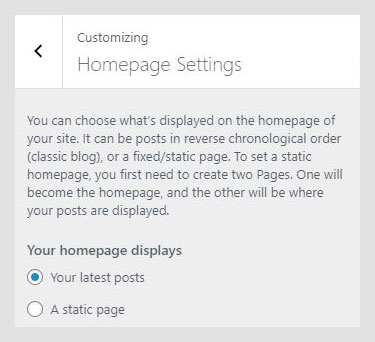
This option works the same way as Settings -> Reading. It allows you to set them to read the latest post or to use static pages for landing and blog pages.
Featured Content
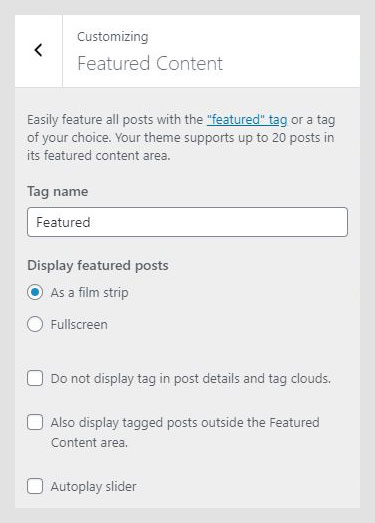
Featured Content is content that is displayed in the slider on the homepage. The Slider is used to promote articles.
- Tag name: Enter tag that is used to mark posts that need to appear in the slider.
- Display featured posts: Slider can be displayed as film strip – 3 smaller images per screen or as a full-page slider.
- Do not display tag in post details and tag clouds: If the option is enabled, the tag that is used for the slider will not be displayed in the metadata or tag cloud.
- Also, display tagged posts outside the Featured Content area: If enabled, posts from the featured content will be displayed in archives, and posts page. Otherwise, they will not be displayed.
Setting up Featured Content Slider
The Featured Content Slider in the Reinform WordPress theme documentation is displayed on the homepage, and setting up the slider is quite simple.
- Make sure that your theme reading settings are set to Your latest post.
- Create several posts and set featured images for each of the posts.
- Tag the desired posts with the same tag – e.g. “Featured”.
- Go to Appearance -> Customize and in Featured Content panel enter the tag that you have used for your posts.
Reinform WordPress theme documentation, step 6: Additional CSS
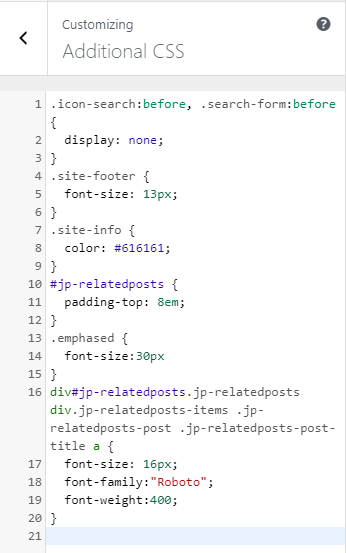
In the Additional CSS section, you can enter your custom CSS classes, so you don’t need to mess with original styles, or create a child theme. Of course, you should create a child theme if you plan to modify other files, as well.
Font Settings
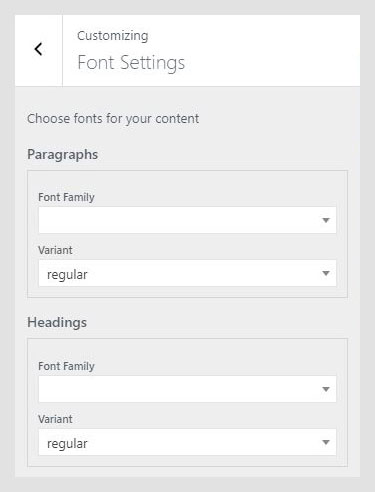
Font Settings allow you to set font-family and font-weight for headings and paragraphs.
Color Settings
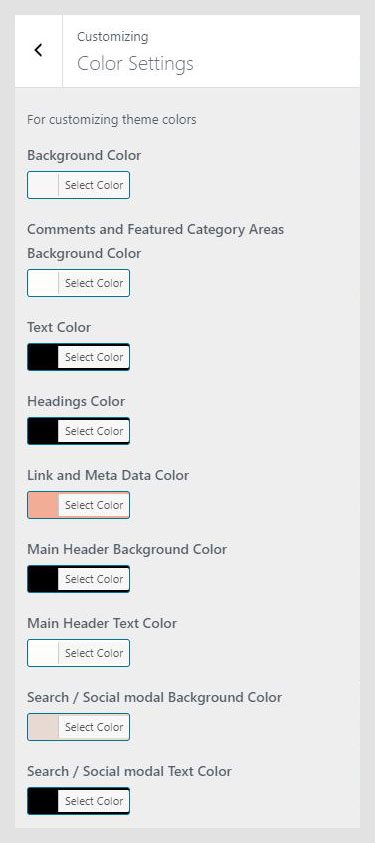
The Colors panel allows you to set the color for different elements of the theme.
- Background color: General background for the theme.
- Comment Area Background Color: Background color for the comments area.
- Text color: Basic text (paragraphs) color.
- Headings Color: Headings – including theme default, and created in the editor color.
- Link and Meta Data: Color of links and categories, tags and date.
- Main Header Background Color: Header background color.
- Main Header Text Color: Color of navigation and other text in the header.
- Search / Social modal Background Color: Color of Search and Social menu.
- Search / Social modal Text Color: Text color inside Search and Social menu.
Theme Options
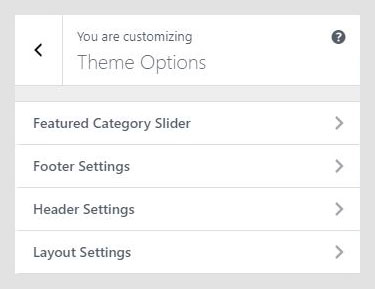
The Theme Options panel in the Reinform WordPress theme documentation contains theme-specific settings. Here you can customize theme appearance – featured slider, Instagram feed, footer and header settings, and change layout appearance.
- Featured Category Slider
- Footer Settings
- Header Settings
- Layout Settings
Featured Category Slider
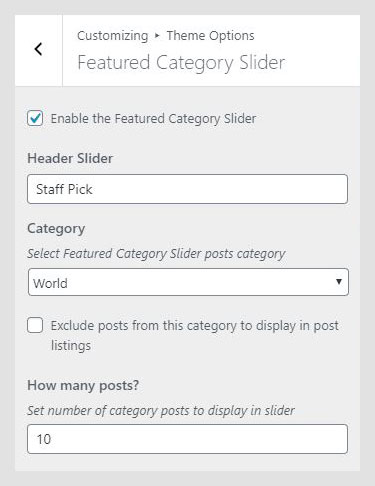
The Featured Category Slider is displayed on the homepage, under the posts. This slider will display posts from the selected category.
- Check to enable Featured Category Slider: If checked, Featured Category Slider will appear on the homepage.
- Add Heading to slider: Heading will be displayed above the slider.
- Select Category: Post category which will be used to display posts.
- Exclude posts from this category to display in post listings: If enabled, posts will be displayed only in the slider. Otherwise, they will appear on the archive page, as well as on post listing.
- Set Category Posts Number: How many posts will be displayed.
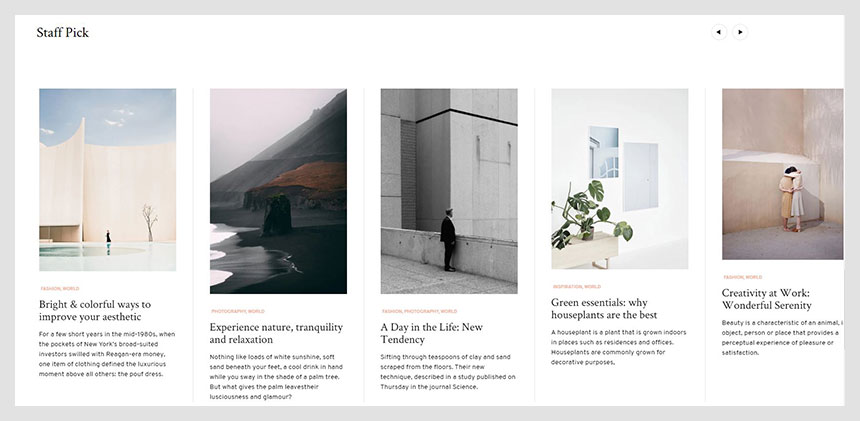
Footer Settings
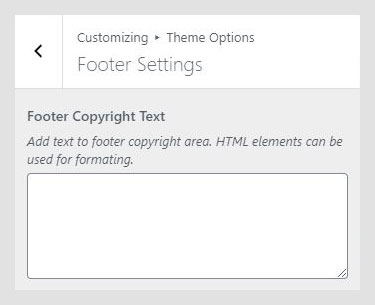
The Footer Settings field allows entering custom footer copyright information. If blank, default Themes Kingdom copyright will be displayed. You can use HTML to style footer content.
Header Settings

Header Settings in the Reinform WordPress theme documentation contain options for sticky header and logo position.
- Sticky header: If enabled, the header will always be visible on the top of the screen. Otherwise, it will scroll with the page.
- Logo position: When centered, navigation will be displayed at the top, and logo under it, at the center of the page. The logo will use the custom background from Header Image.
Layout Settings
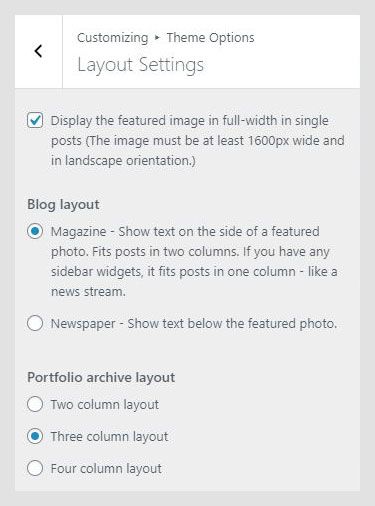
- Display featured image in full width: If enabled, a Featured image larger than 1600px in portrait orientation will be displayed in full width, across the screen.
- Blog layout: Defines how poss will appear. Magazine style images will be displayed on the side with text, in two columns. If the sidebar is displayed, posts will be displayed in one column. A Newspaper style will display featured images at the top, with text under them.
- Portfolio archive layout: Portfolios can be displayed in two, three or four columns.
Reinform WordPress theme documentation, step 7: Theme specific features
Featured Image Size and orientation
The theme detects image orientation, and depending on the image – landscape or portrait, layout of the single post page will vary.
- Landscape: Landscape image will be displayed at the top of the single post page, with post title under it.
- Portrait: Portrait image and post title will be displayed side by side. Please note that portrait images should note be huge and that you should keep their width under 800px.
- Full-width landscape image: the Featured image will be displayed at the top of the single post page but in full width. This will only apply for images with larger than 1600px and if Full width image is enabled in the Layout Settings.
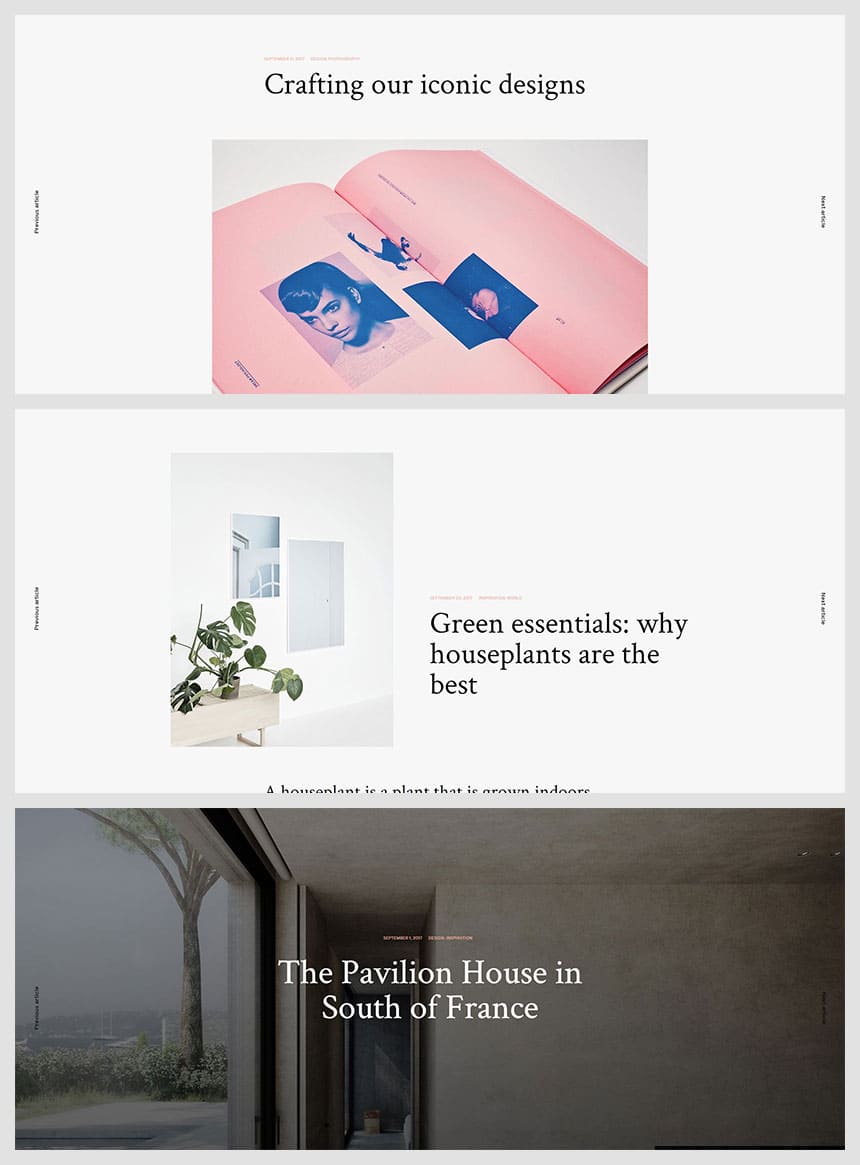
The Full-width image in the content
Inserting a full-width image in the content is an awesome way to break the text and add an outstanding image. To create a full-width image in the content, simply insert an image as a media file into the content and add it to a class tk-fullsize-img. To add class to the image, switch the editor to text mode and add code like this to image class=”tk-fullsize-img”. For example, a full code for the image will be like this:

Reinform WordPress theme documentation, step 8: Useful CSS classes
Increase logo size
.site-branding {
width: 220px;
}
Remove overlay from featured content slider
.slider-entry-content-wrap {
background-color: transparent;
}
Customize navigation font
.nav-menu > li > a {
font-size: 14px;
font-weight: 700;
}
Customize single post title
.single .entry-title {
font-size: 42px;
font-weight: 700;
}
